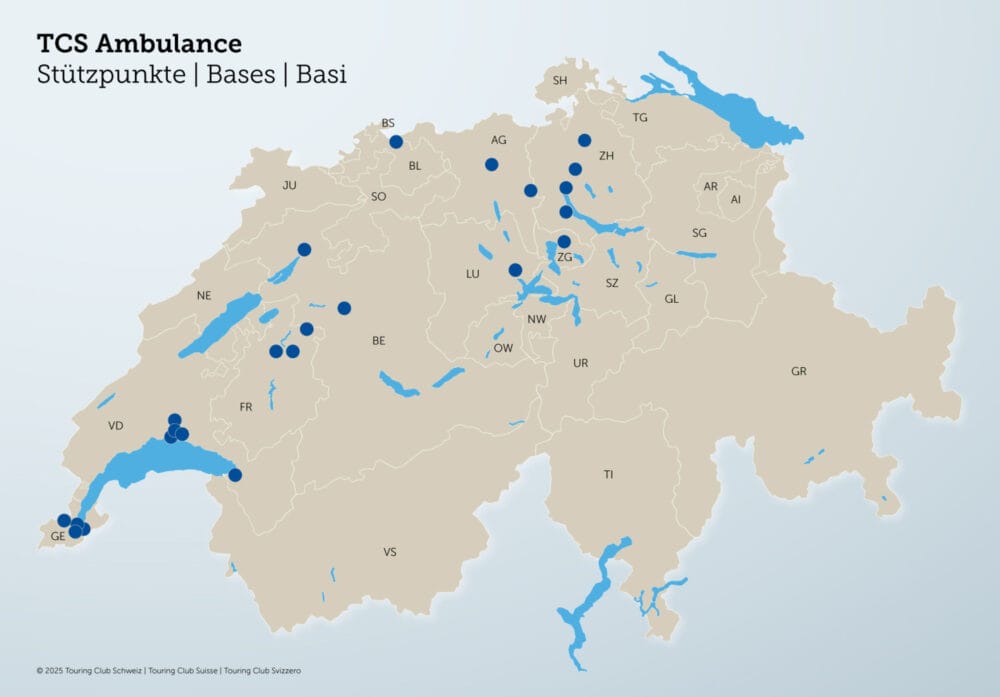Cell phone distraction can be deadly
A new study shows: Two-thirds of drivers and pedestrians use their smartphones while on the road. Crash tests show what dangers this entails. The insurance company's accident researchers are calling for concrete measures to counteract high-risk cell phone use in traffic.

Smartphones are actively used in traffic by both drivers and pedestrians, although this is extremely risky. At the crash tests in Dübendorf, AXA Winterthur's accident research team uses three crashes to demonstrate the consequences that distraction by smartphones in traffic can have. It will also present the latest study findings of AXA's Foundation for Prevention on cell phone use on Swiss roads.
The results show: Around two-thirds of the drivers surveyed have already used their smartphone at the wheel, although the majority (94%) consider this to be dangerous themselves.
Bettina Zahnd, Head of Accident Research & Prevention at the insurance company, illustrates the risk: "If you fix your gaze on your smartphone display for just two seconds while driving at 50 km/h, you'll find yourself flying blind for 28 meters." Many of the drivers surveyed know this risk firsthand. One in three said they had already experienced a dangerous situation because they or another road user were distracted by their smartphone.
WhatsApp is also used while driving
According to the study, drivers most often use their cell phones to make phone calls or as navigation devices. But text-based communication is also widespread: 23 percent of drivers who have already used their smartphone while driving have also read text messages or WhatsApp messages at the wheel, and 13 percent have written messages themselves. For Bettina Zahnd, it's clear: "Not only talking on the phone, but also typing in numbers, searching for a route on the navigation system or reading messages are massive distractions for drivers." According to official figures, around 21 percent of all accidents involving personal injury can be attributed to distraction and inattention. "We assume that smartphone use in particular also plays a role in this. In addition, we expect a large number of unreported cases, as the causes of accidents cannot always be determined precisely. For example, disregarding the right of way can ultimately be a consequence of distraction," explains Zahnd.
Expand the catalog of buses
Until now, the only offence listed in Switzerland in the catalog of administrative fines has been using the phone without a hands-free system, with a fine of 100 francs. Bettina Zahnd sees an urgent need for action here: "Activities such as reading or writing messages on a cell phone while driving are significantly more dangerous than making a phone call without a hands-free system, because drivers do not look at the road, but at the display." Zahnd therefore demands that any manipulation of mobile devices while driving should result in a fine, significantly higher than the 100 francs mentioned. Zahnd, an accident researcher, is convinced that a fine would lead to increased awareness of the problem among drivers. Three quarters of the drivers surveyed (77%) would also be in favor of introducing a fine, according to the study.
The new danger: "Smombies
Not only drivers, but also pedestrians are dangerously distracted because of their smartphones. A third of the pedestrians surveyed often use their smartphones when they are out in traffic, and another third at least occasionally. So-called smartphone zombies - "smombies" for short - focus their attention not on the road but on their devices, thereby endangering themselves and others.
Bettina Zahnd explains: "Pedestrians perceive dangers in road traffic with their eyes and ears. If these senses are muffled or even switched off - for example by listening to music, watching videos, reading the news or checking apps - pedestrians can become both the cause and the victim of traffic accidents." The accident researcher fears that such accidents provoked by "smombies" are on the rise and that the victims tend to be younger: "Our study shows that people under 35 in particular use smartphones more often than average in road traffic." Among 14- to 25-year-old pedestrians, more than half use their cell phones often or very often when they are on the road, especially to listen to music, read or write text messages or WhatsApp messages, and to make phone calls. Around 30 percent of these young pedestrians also play Pokémon Go.
Also buses for pedestrians
According to Zahnd, people should not be allowed to look at their smartphones or wear headphones, especially when crossing the street. "Even if pedestrians primarily endanger themselves with their behavior, we demand that people should not be allowed to use smartphones when crossing the street. If they do it anyway, pedestrians should also be able to be fined." The same should apply to cyclists who use their smartphones while riding. Zahnd: "Smartphones are omnipresent in our everyday lives; people hardly ever put them down, even when they're on the road. We want to counteract this dangerous development."
Thanks to a 3D video, the viewer can experience the accident live
New ways in prevention
AXA Winterthur is breaking new ground in prevention work with a 360-degree video: "Thanks to virtual reality, the viewer feels placed in the situation - he experiences the accident as it happens. This is a key factor in prevention work, as our experience has shown," explains Zahnd.









